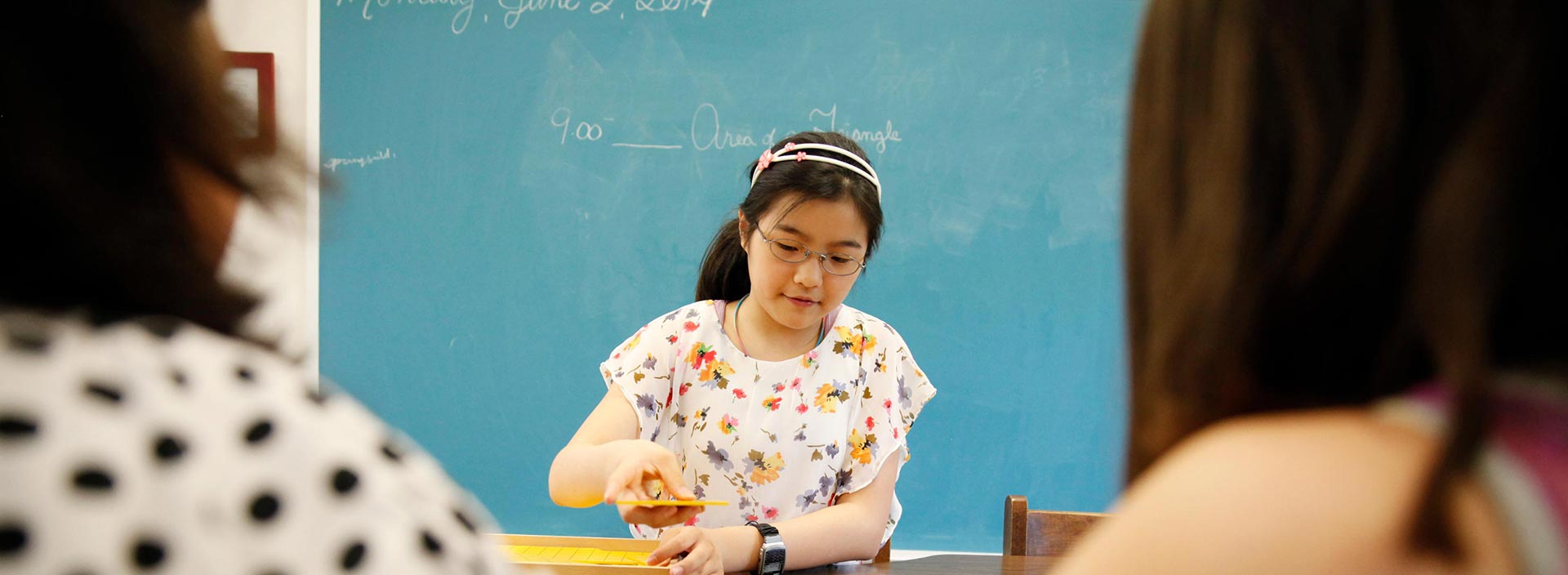
Today’s Montessori
Today’s world is rapidly changing and increasingly complex: the influx of technology and social media, the shift to the knowledge economy, globalization. There is also increasing pressure on parents to intervene and ensure their child’s success in academia, and even in their adult lives.
All of these changes mean young adults are struggling to find their independence and learn the skills they need to navigate complexity, overcome challenges, think for themselves, create their paths to success, and develop independence.
The Montessori Method of education, developed by Maria Montessori, has been in practice for more than 100 years. Montessori developed her methodology based on the defining and eternal characteristics of how children and adolescents learn that are not affected by time and culture. Still changes in our world mean that the concepts and content of curriculum have to keep pace. CDS has made the necessary adjustments to preserve the essential tenets of Montessori philosophy and adapt to the needs of the 21st century learner.

How is Montessori different?
- The classrooms are mixed aged. Students “practice life” in micro societies that emulate real life giving them a significant head start on the transition into adulthood.
- Students choose their own activities, with varying levels of direction from and oversight by teachers, from a range of options and have uninterrupted blocks of work time fostering independence.
- Immediately following introduction to new material—when a student’s interest is at its peak—is the optimal time for deep and lasting learning. CDS classrooms allow for immediate independent or collaborative work to follow.
- Student instruction is individualized based on the characteristics, tendencies, talents and abilities of each child to improve engagement and performance.
- Students participate in peer teaching and mentorship which promotes mastery of knowledge and skills versus test-driven memorization
How do these principles help prepare students for today’s world?
- We give students choices so they learn to think and make choices independently. This also helps students to know their strengths and areas for improvement.
- We give them responsibilities, so they learn the importance and value of contributing. Our goal is for all of our students to understand their relationship with the world and that their actions matter.
- We all learn most from our mistakes. Setting students up for constant success is not preparing them for the challenges of real life. We believe in natural consequences, so they understand their impact and learn accountability.
- We encourage them to do hard things and take risks. We want our students to understand that failure is not a final destination but a step on the path to success. The key is learning how to persevere, get back up and have another go at it.
- Our students are not afraid of competition, but as they strive to achieve personal goals, we want them to learn to consider the needs of those around them.
How do you ensure academic equivalency with the public schools?
While our approach is quite different than traditional school, we understand the pressure to “achieve academically.” Our students do exceptionally well as they transition to high school and score competitively on all standardized tests. We ensure they are still learning the core curriculum taught by our public school counterparts. Our Faculty take public school curriculum into account and incorporate subject and content areas when appropriate.
- Students also take national standardized tests twice a year 4th- 8th grades to ensure they are hitting benchmarks and gain test taking experience.
- In addition, Countryside’s experienced teachers are cognizant of benchmarks for every grade level, and they are constantly assessing student learning in informal ways. Because work with students is always in small groups, teachers are immediately aware of students who are struggling to understand concepts and can respond promptly. Conferences are held twice per year. At the conferences, our teachers clearly articulate a student’s performance in the context of grade level benchmarks. If students are not reaching these benchmarks, parents are made aware of the particular struggle and what interventions are being implemented. Teachers also inform parents of areas of higher achievement.


